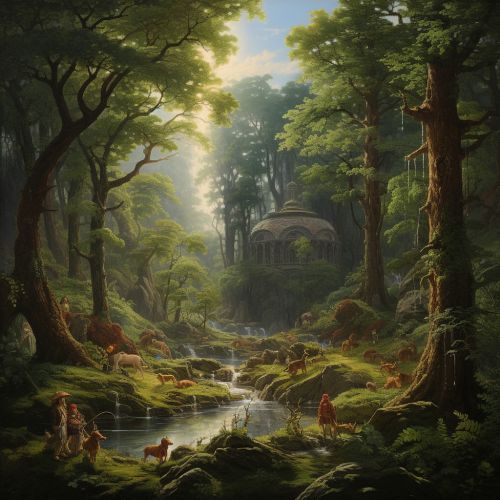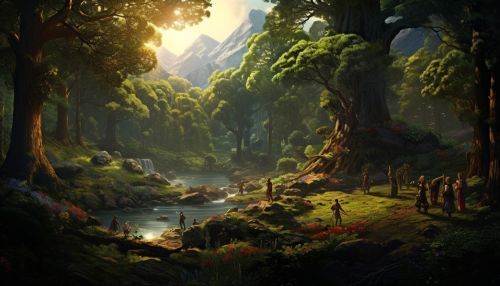Germanic mythology
Origins and Development
Germanic mythology, a subset of Germanic Paganism, is a rich and diverse system of beliefs and legends associated with the Germanic peoples, who inhabited the regions of Northern Europe, Scandinavia, and parts of the British Isles. The mythology is characterized by its polytheistic nature, with a pantheon of gods and goddesses, as well as a host of supernatural creatures and entities.


The origins of Germanic mythology are deeply rooted in the Proto-Indo-European religion, from which it evolved over centuries. The Germanic peoples, like many other Indo-European cultures, shared a common linguistic and cultural background, which is reflected in their mythologies. The mythology further developed and diversified as the Germanic tribes migrated and interacted with other cultures.
Pantheon of Deities
The pantheon of deities in Germanic mythology is extensive and varied. The gods and goddesses were worshipped and revered for their individual powers and attributes, and each had a specific role in the cosmic order. The pantheon was divided into two main families, the Aesir and the Vanir, who were initially at odds but later reconciled and intermingled.
The Aesir were the primary gods, associated with warfare, authority, and power. The most prominent among them was Odin, the Allfather, who was the god of wisdom, war, death, and magic. Other notable Aesir included Thor, the god of thunder and protector of mankind, and Tyr, the god of law and heroic glory.
The Vanir, on the other hand, were associated with fertility, prosperity, and wealth. They included Freyr, the god of fertility and prosperity, and Freyja, the goddess of love, beauty, and fertility. The Vanir were also known for their proficiency in magic and their close connection to nature.
Cosmology
The cosmology of Germanic mythology is complex and intricate, consisting of nine interconnected worlds. These worlds were all held within the branches and roots of the cosmic tree, Yggdrasil. The worlds included Asgard, the home of the Aesir; Vanaheim, the home of the Vanir; Midgard, the world of humans; and Hel, the realm of the dead, among others.
The cosmos was believed to be cyclical, with a series of ages leading to the cataclysmic event of Ragnarök, the end of the world, followed by a rebirth and a new age. This cyclical view of time and existence is a key feature of Germanic mythology.
Myths and Legends
The myths and legends of Germanic mythology are diverse and multifaceted, encompassing creation myths, heroic tales, and eschatological narratives. These stories were passed down orally for centuries before being recorded in texts such as the Poetic Edda and the Prose Edda.
One of the most well-known myths is the creation of the world, which involved the slaying of the primordial giant Ymir by the Aesir gods. His body was then used to create the cosmos, with his blood forming the seas, his flesh the earth, and his skull the sky.
Heroic legends, such as the tales of Sigurd the dragon slayer, were also prevalent, often serving as moral and cultural guides. These stories were filled with themes of courage, honor, and sacrifice, reflecting the values of the Germanic societies.
Influence and Legacy
The influence of Germanic mythology can be seen in many aspects of modern culture, particularly in literature and popular media. The works of authors such as J.R.R. Tolkien and Neil Gaiman have drawn heavily from Germanic myths, and elements of the mythology can be found in various forms of media, from video games to movies.
Despite the Christianization of the Germanic peoples, the mythology has endured and continues to captivate audiences with its rich narratives and complex characters. It remains a significant part of the cultural heritage of the Germanic-speaking world and continues to be studied and explored by scholars and enthusiasts alike.
